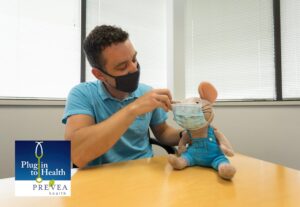
Close to 800,000 people die due to suicide every year, which is one person every 40 seconds, according to the World Health Organization.
Navigating a pandemic and national unrest may contribute to this troubling statistic, as fear and anxiety may overcome us as we’re trying to understand what’s happening around us.
As National Suicide Prevention Week (Sept. 6 – 12) approaches, HSHS St. Vincent, St. Mary’s, St. Nicholas and St. Clare Memorial hospitals remind everyone that if you or someone you know is having suicidal thoughts, you should call the Suicide Prevention Lifeline at 1-800-273-8255, or dial 911.
Alyssa Van Duyse, an HSHS colleague and suicide prevention instructor certified by the national QPR Institute, says it’s important to not only take note of your own feelings during this uncertain time, but also of those around you.
“The word ‘suicide’ is still thought of as taboo – especially in the Midwest because we’re not so great at talking about our feelings,” says Alyssa. “That’s why it’s important to recognize the clues a person may be contemplating suicide.”
Four ways someone may tell you they are contemplating suicide:
- They give a direct verbal clue by saying something like “I’m going to end it all,” or “I wish I were dead.”
- They give a coded verbal clue by saying something like “I”m tired of life. I just want out,” or “I can’t take it anymore.”
- They exhibit behavioral clues like increased risk-taking, self-injurious behavior or drug or alcohol abuse.
- They should situational clues like being fired from a job, being diagnosed with a serious illness or being bullied or humiliated.
During QPR (Question, Persuade, Refer) suicide prevention classes, Alyssa instructs participants to practice asking the question, “Are you thinking about suicide?”
“If you practice it, it won’t be so hard to ask if you ever have to ask someone in a real-life situation,” she says. “Also, sometimes people who are considering suicide are relieved if you ask because it indicates that someone noticed their struggle.”
For more information about how you can help someone struggling with mental health, visit the Centers for Disease Control and Prevention website.


